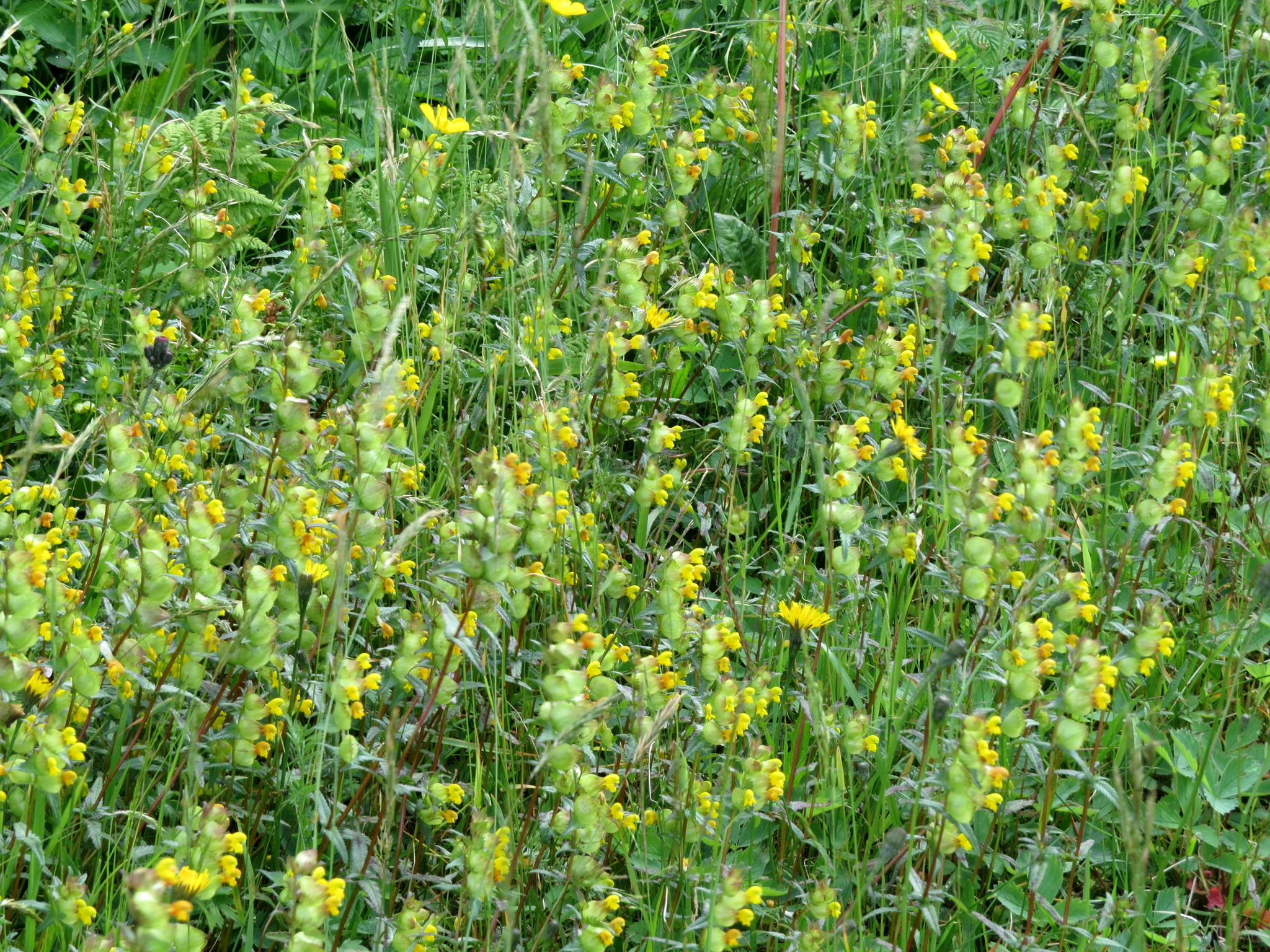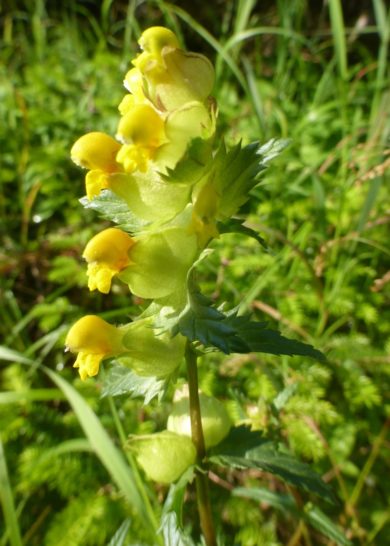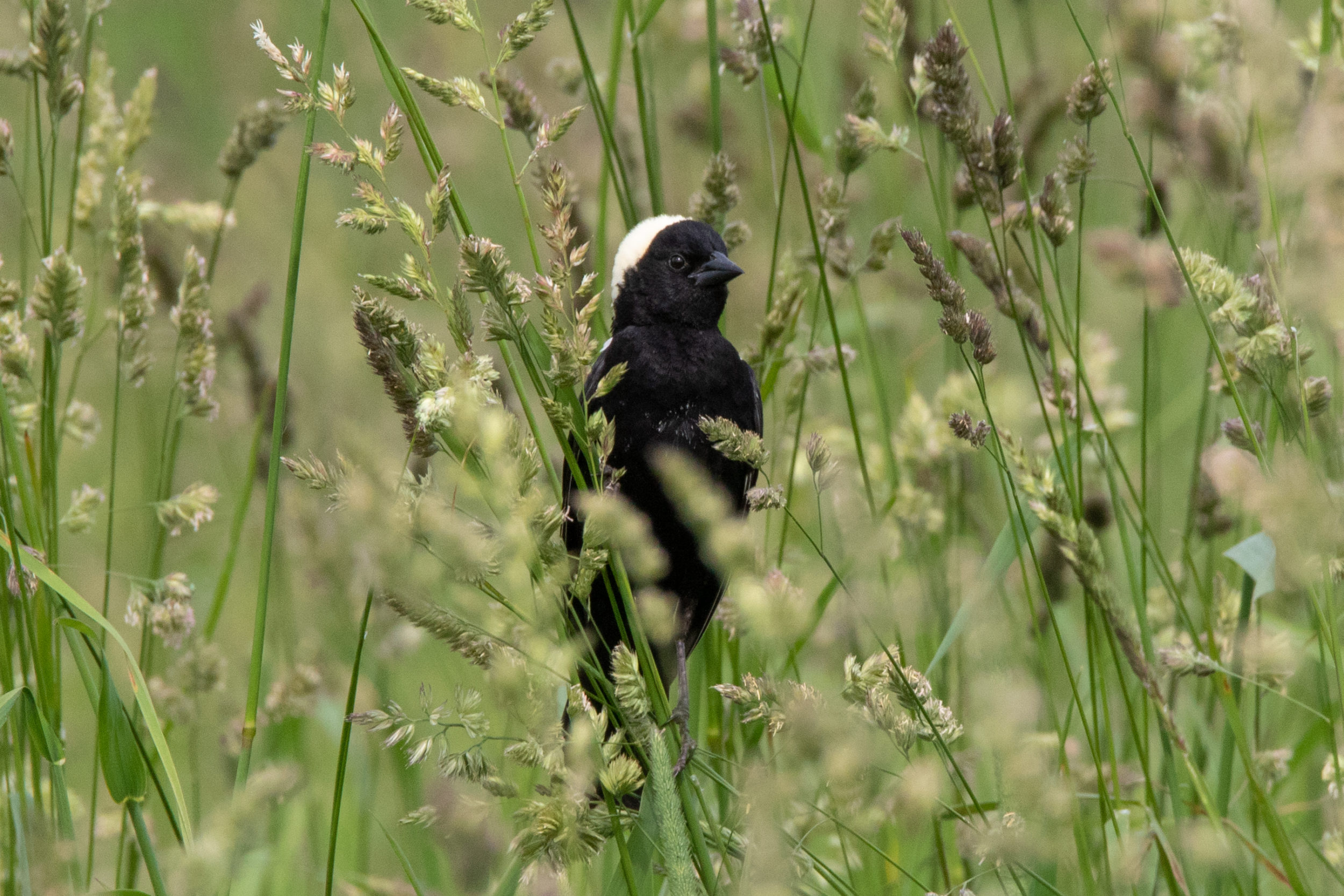This is the second in a series of three profiles that highlight the efforts of landowners and land managers to improve grassland bird habitat. Bobolinks and other grassland-dependent bird species show long-term, range-wide declines. Adjusting management practices is key to reversing population declines. – Cathryn Abbott
In 2014, Wally Bragg was visited on his farm by then-graduate student and VCE intern, Jamie Sydoriak. Through Jamie, he learned of the plight of grassland birds nationwide and VCE’s efforts to help—and he enthusiastically signed on as an Upper Valley Grassland Ambassador. Jamie moved on after obtaining her Master’s degree focused on grassland bird conservation, and Wally still manages his 150 acres of hayfields in Ryegate, VT with the needs of Bobolinks in mind. Years of observing “his” birds have shown Wally where they prefer to nest; with careful planning he staggers his harvest dates and waits until later in the summer to cut the Bobolink nesting areas. The result is 200 round bales of quality hay and dozens of young Bobolinks fledged each season. At least that’s the way it used to work, before an aggressive weed appeared in Wally’s fields.

Wally Bragg holds a stem of invasive Yellow Rattle found in some of his hayfields. © Cathryn Abbott.
Yellow Rattle, Rhinanthus cristagalli, is a hemiparasitic plant, meaning that while it can photosynthesize for nutrients, it is also adept at stealing nutrients from nearby plants. It is especially effective in parasitizing grasses. A native to Europe, its North American origins remain ambiguous. References to Yellow Rattle have appeared in New England field guides for at least 50 years, and in Vermont it dates as far back as the early 20th century in herbarium collections. This annual has been growing in New Hampshire for the past few years, out-competing forage grasses and achieving super-villain status. Why it is only now suddenly spreading rapidly through Vermont is a puzzle.

A field of Yellow Rattle. © Charlotte Bill, iNaturalist observation 7192933.
The means to control Yellow Rattle may sometimes seem equally mysterious, but there are measures that undoubtedly combat it. In most Vermont fields there is still time for the most effective and least costly method: prevention.
Yellow Rattle is spread by contaminated farm equipment, so ensuring that any machinery entering your property has been thoroughly cleaned is paramount. Early detection is crucial, and recognizing the yellow snapdragon-like flowers when they first appear, still in low numbers, permits hand-pulling. Mowing along the perimeter of fields several times during the growing season protects against encroaching invasive plants and functions as a first line of defense. Because grassland birds tend to nest in field interiors up to 25 yards away from forest and road edges, this also happens to be a Bobolink-friendly approach.

Yellow Rattle. © tapaculo99, iNaturalist observation 7123971.
If this invasive is already present, the key to curbing a serious infestation is to thoroughly search the field for all Yellow Rattle plants, and pull or cut them before they set seed. At maturation, each plant is capable of dispersing up to 240 seeds, so it’s essential to do multiple searches and remove plants before their round seed pods begin “rattling” in the wind. Keep an especially close watch on road-side edges, places where farm equipment is parked, and wet areas where mowing may be less regular. Monitoring soil pH and nutrient levels and adding amendments as needed will encourage the growth of forage grasses. Research suggests that applications of wood ash are especially effective in combating yellow rattle, although the reasons are not well understood.
Back on the front line, Wally is conquering his Yellow Rattle infestation by adjusting his rotational haying plan so that areas with the invasive plant are cut first and often. According to Wally, the primary importance of the early cut is to “define the bird nesting area,” to “move the birds” to fields that will remain uncut and to do it before the birds actually nest. Wally noted that one of their favorite fields was loaded with Yellow Rattle, so he cut it early; the birds responded by nesting in a nearby uncut field that they hadn’t used before. This strategy may not always work, as Bobolinks may abandon a farm altogether rather than select another nesting site, but in Wally’s case, they opted for second choice.
Specific dates vary from year to year depending on the weather, but first harvests typically occur from May into the first week of June, before the invasive plants produce seeds. Wally advises that it’s important to continue to monitor the field after the early first cut. A second cut in July may well be necessary. Two consecutive years of early mowing should have a significant impact on Yellow Rattle, as the seeds are fortunately short-lived.
Wally reports that the Bobolinks are still nesting in the uncut portions of his fields each year. Controlling this invasive adds complexity to his management plan, but his goals remain the same: growing a good crop of hay and providing habitat for Bobolinks.
For more information on Yellow Rattle contact your local county Extension office:
New Hampshire: extension.unh.edu
Vermont: extension.uvm.edu

